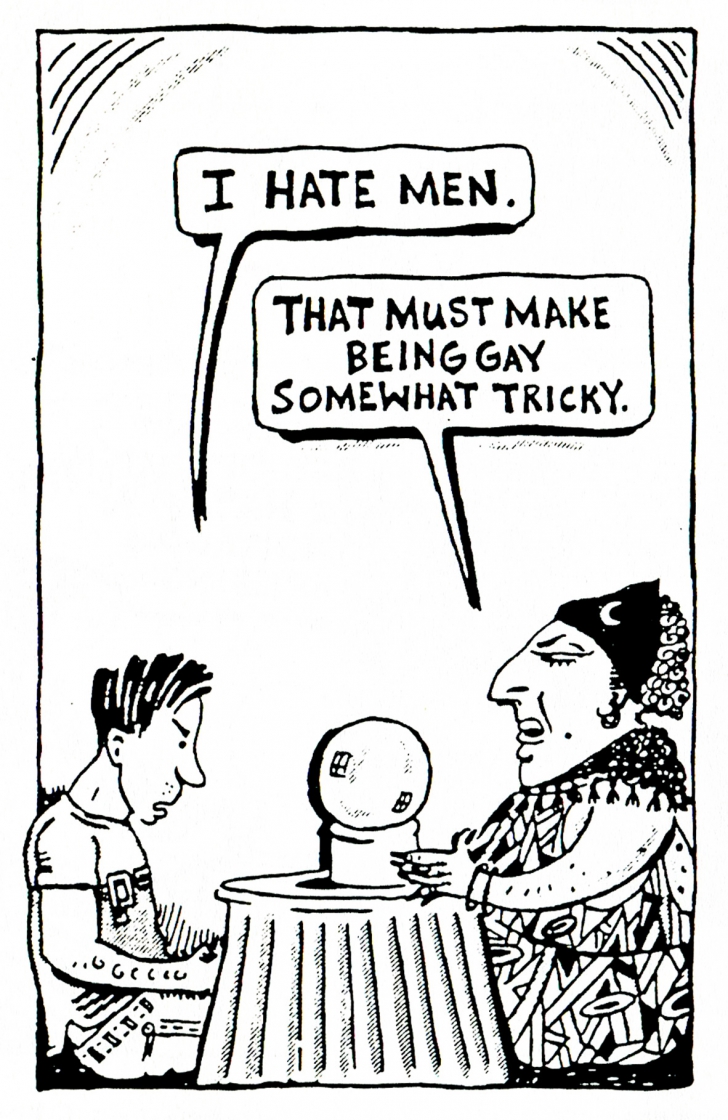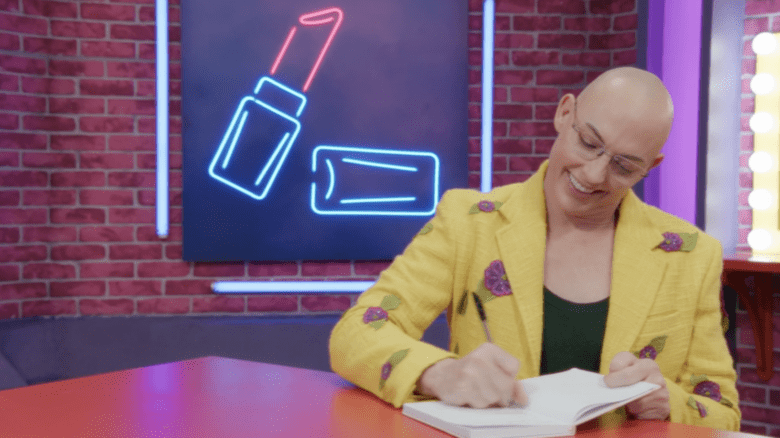
Groundbreaking in its exploration of gay male life in a cartoon format, The Mostly Unfabulous Social Life of Ethan Green followed the title character across 15 years of heartbreak and hilarity. The strip had a cult-like following until it ended a decade ago.
Now Eric Orner, the cartoonist who invented Ethan, has released a compendium called The Completely Unfabulous Social Life of Ethan Green. In it, we relive the dramas and wisecracks that kept fans returning weekly to follow the cast of colourful characters Orner imagined.
At its peak, Ethan Green was carried by close to 100 papers, most of them gay but also a few alternative weeklies. Xtra was among the papers that carried Ethan Green for a long time and this accounts in part for a significant level of Canadian content in the strip.

“If Canada was being good enough to publish me, then I was going to return the favour and I was grateful for it,” Orner tells Daily Xtra. “But I’m also interested in it.”
Orner closely followed the NDP’s unexpected election in the recent Alberta election, and says he’s spent plenty of “strange evenings” in Montreal, a quick jaunt from Boston.
Though he conceived of Ethan independently, Orner admits he sees the strip along the lines of Alison Bechdel’s Dykes to Watch out For.
“There was a good cartoon about women and about the lives of women you might know,” he says. “Not superheroes, not biker dykes that were members of crime-avenging gangs, just women who worked in a bookstore. That formula — which I came to separately, I didn’t really come to it by reading Dykes to Watch out For —that was what I wanted to do. I wanted to tell stories about the lives of gay men who I knew or would recognize. That meant, for me, two very specific things. It meant not Tom of Finland hyper-masculine sailors or bikers — not that I mind any of that in any way — and it also meant that at the other end of the spectrum, not arch fags or the Noël Coward types. It meant average guys that happened to be gay. By average I don’t mean uninteresting or unfunny. I just mean people that didn’t look like a Halloween costume when they walked down the street.”

Ethan Green captured the zeitgeist of an astonishing time, addressing AIDS and the beginnings of the most dramatic expansion of gay rights in North America, as well as the backlash to it, through identifiable characters. The strip itself also occasionally elicited a backlash.
While scenes could be described more as suggestive than explicit, they sometimes raised the ire of prigs, which Orner finds a bit ironic.
“You look at the sex scenes in Ethan and he’s rarely actually enjoying himself,” Orner says. “He’s rarely getting off. He’s worrying about his performance. He’s thinking about whether he paid the phone bill. He’s not enjoying whatever physical thing his partner is doing to him. It’s a sendup of sex. This stuff isn’t meant to be sexual, it’s almost meant to be the opposite.

There were a few years when Ethan paid Orner more than his day job, but that was rare.
“Cartooning’s a little bit like being a poet,” he says. “Most cartoonists I know aren’t lucky enough to do it full-time.”
A more fruitful professional arrangement is also a fascinating sub-plot to the Orner bio. While he was drawing an iconic gay cartoon strip at night, he was working days on Capitol Hill for Barney Frank, the recently retired iconic gay congressman.
Orner had run into Frank around Boston and the longtime politician told him: “You can wait tables as a day job and starve, or you can come work for me,” Orner recounts. “So that made sense to me. He put up with having somebody on his staff for over a decade who he knew really wanted to just go home and draw. For that I’m very grateful.”

In 2000, Orner decided he wanted to devote himself full-time to animation. He moved to California and soon landed a job at Disney. It turned out to be quite a leap from drawing a cartoon about a group of gay guys in Boston to sitting in “story meetings where the big issue is how Tinkerbell flutters.”
“They both involve drawing but they’re very different,” he says. “That was not about my creativity, that was about Uncle Walt.”
It may not have been a perfect fit.
“I admit I’m a better animator than a lot of people but I’m not as good as a lot of people in that building,” he says. “I was told once that my Tinkerbell moves across the screen a little bit like a Black Hawk helicopter.”
When a film version of Ethan Green came out in 2005, Orner decided that might be as good a time as any to retire the strip. But larger economic issues were also at play.
“Many, many of my newspapers were folding,” he says.
The nature of media writ large is different today, he adds. Cartoons used to be a succinct way to make a point. Attention spans have shrunk to such an extent that a new term — memes — has been coined. In such an environment, the collected strips of Ethan Green constitute long-form fiction. But paging through this book is to renew old friendships and relive a crucial epoch in gay life thanks to the uproarious, smart imagination of Eric Orner.


 Why you can trust Xtra
Why you can trust Xtra


